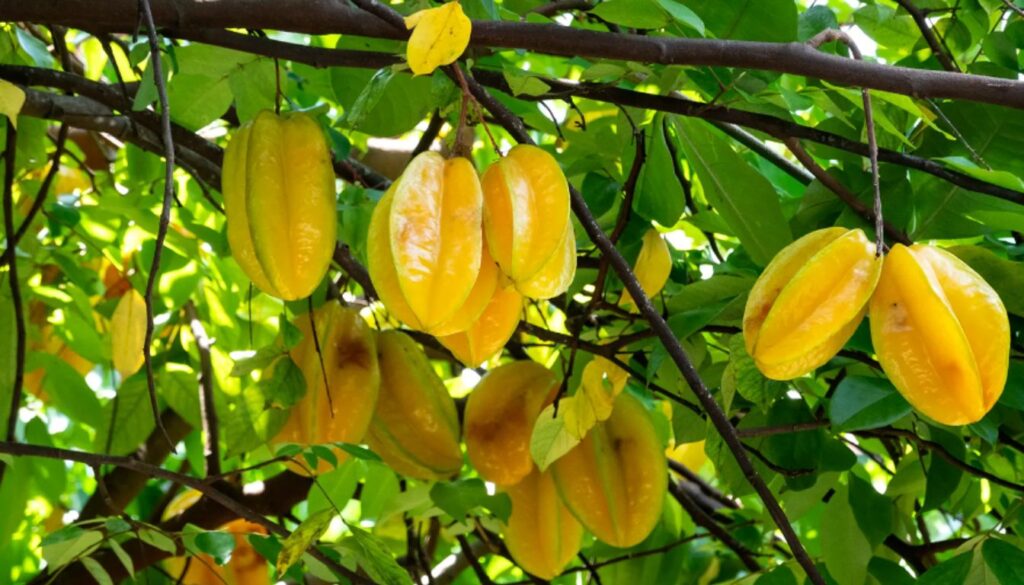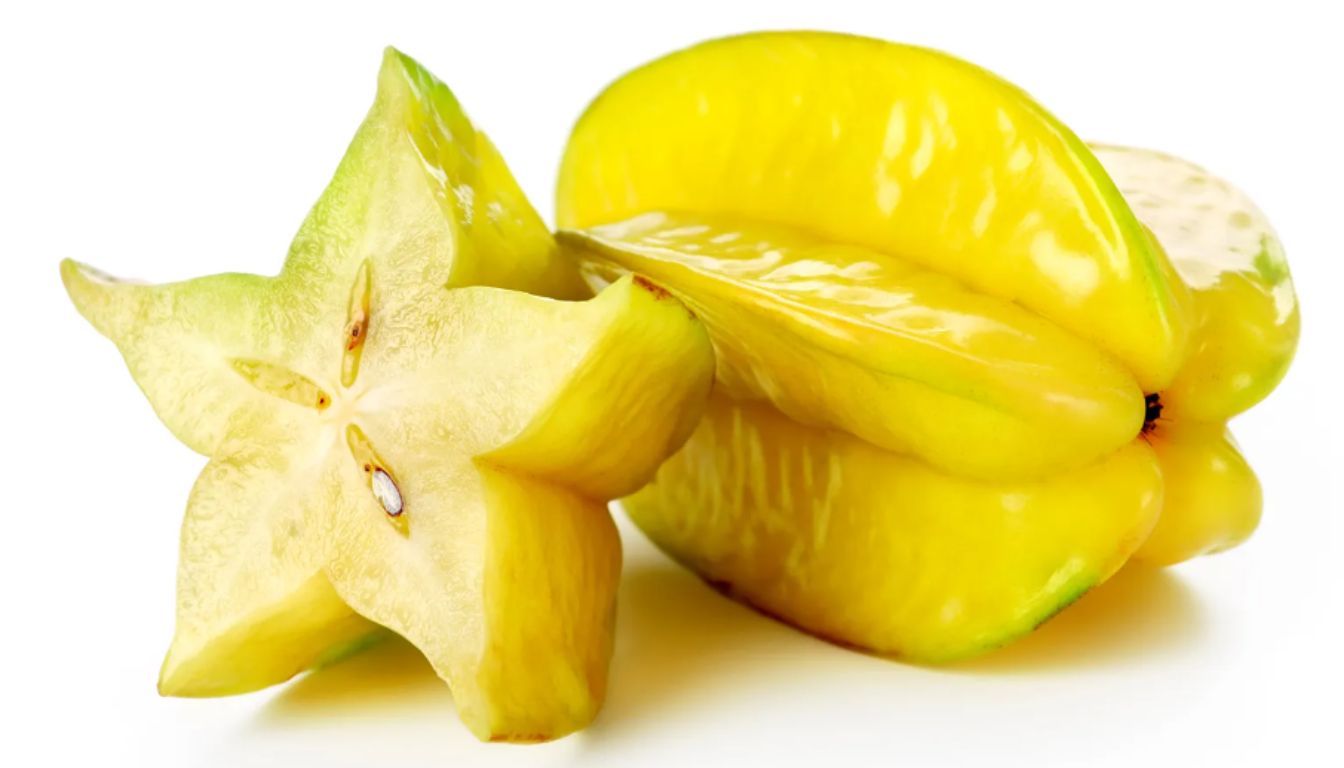If you haven’t tried carambola, you’re missing out on a tropical delight that’s as delicious as it is unique. Also known as star fruit, this exotic fruit not only looks stunning with its star-shaped slices but also packs a punch of flavor that dances between sweet and tart. Imagine biting into a juicy piece that instantly transports you to a sun-soaked paradise.
Beyond its eye-catching appearance, carambola is loaded with health benefits. It’s low in calories and rich in antioxidants, making it a perfect addition to any diet. Whether you’re tossing it into a fruit salad or enjoying it on its own, carambola adds a refreshing twist to your culinary adventures. Dive into the world of this fascinating fruit and discover how it can elevate your meals while boosting your health.
Overview of Carambola Fruit
Carambola, often called star fruit, catches your eye right away with its star-shaped cross-section. This tropical delight hails from Southeast Asia, but it’s enjoyed globally for its unique appearance and delightful flavor. Imagine biting into a piece that balances sweet and tart notes, providing a refreshing taste that excites the palate.
Rich in vitamin C and fiber, carambola boasts impressive health benefits. It’s low in calories too, which makes it a great choice for those mindful of their diet. Throw in its antioxidants, and you’ve got a fruit that’s not just tasty but also a nutritional powerhouse.
In the kitchen, creativity flourishes with carambola. It shines in salads, where its striking shape makes any dish pop. Who wouldn’t want a splash of flavor and color in their meals? Slicing it into star shapes can elevate even the simplest dishes. So, whether you enjoy munching on it fresh or tossing it into smoothies, carambola can easily spark culinary magic.
Storage of carambola requires a little attention. You’ll want to keep it in the fridge if you’re planning to savor it later. This tropical fruit maintains its best flavor and texture chilled, promising you the ultimate taste experience. Just remember, once it ripens, eat it soon for that delightful crunch and burst of flavor.
Nutritional Benefits of Carambola Fruit
Carambola fruit is not just a pretty face. It’s packed with nutrients that your body craves. This tropical delight offers an impressive array of vitamins and minerals, making it an excellent addition to any diet.
Vitamins and Minerals
When it comes to vitamins, carambola shines brightly. It contains vitamin C, which plays a crucial role in boosting the immune system. Just one serving can provide about 34% of the daily recommended intake. Furthermore, carambola is rich in fiber. Fiber aids digestion and promotes a healthy gut, which you definitely want. On top of that, you’ll find smaller amounts of vitamins A and B, along with essential minerals like potassium and magnesium. These nutrients contribute to heart health, muscle function, and more. Who knew looking at a star could be so beneficial?
Antioxidant Properties
The antioxidant properties of carambola are nothing to sneeze at either. They help combat oxidative stress in the body. This means fewer free radicals causing trouble. According to research, various antioxidants present in carambola, such as quercetin and flavonoids, play a role in reducing inflammation and promoting overall wellness. Imagine munching on a fruit that can fight off those pesky free radicals while you enjoy its delicious flavor. It’s like eating a snack that’s also your health’s best friend! Plus, antioxidants may help in reducing the risk of chronic diseases. Who wouldn’t want to add that to their list of benefits?
Culinary Uses of Carambola Fruit

Carambola, or star fruit, shines not just in looks but in the kitchen too. Using this unique fruit can invigorate your meals and tantalize your taste buds.
Fresh Consumption
Eating carambola fresh is one of the best ways to enjoy its crisp texture and tangy flavor. I love slicing it into star-shaped pieces for a salad that looks as good as it tastes. Tossing those stars into a fruit salad adds a visual punch alongside other fruits like melons or berries. The contrast between its sweetness and slight tartness makes it a standout. For a refreshing drink, blending it into smoothies or juices brings a vibrant flair and a nutrient boost. You can’t go wrong with enjoying it plain either. The delightful crunch and juiciness make for a perfect midday snack. Who needs potato chips when you’ve got this tasty alternative?
Cooking and Baking
Cooking with carambola opens up a world of possibilities, from savory to sweet. I often use it in stir-fries for a touch of sweetness that balances bold flavors. Its acidity can brighten up dishes, complementing proteins like chicken or shrimp. When it comes to baking, carambola’s unique shape makes it a showstopper on cakes and tarts. Imagine a cake adorned with its starry slices; it’s hard not to impress guests! Additionally, it plays well in salsas, adding a tropical vibe to fish or grilled meats. Whether it’s enhancing a recipe or stealing the spotlight, carambola brings a burst of flavor and creativity to any culinary adventure.
Health Considerations of Carambola Fruit
Carambola fruit offers numerous health advantages, though some health considerations deserve attention. Let’s dive into the details.
Potential Health Risks
Carambola may look friendly with its star shape, but caution exists for certain individuals. People with kidney issues might want to steer clear. This fruit contains oxalic acid, which can be problematic for those with compromised kidney function. High oxalic acid levels can lead to kidney stones or exacerbate existing kidney conditions. If you enjoy carambola and have kidney problems, discussing it with a healthcare provider first is wise.
Additionally, excessive consumption can lead to gastrointestinal issues like bloating or upset stomach. Balance is key. Moderation ensures you enjoy carambola’s delicious flavor without overdoing it. Now, who wants stomachaches when they could savor the star fruit instead?
Interactions with Medications
When it comes to medications, carambola doesn’t play well with everyone. It can interact with certain drugs, especially those processed by the liver. For instance, if you’re taking statins or blood pressure medications, those could be affected. It’s all about those pesky enzymes that break down drugs. An overload of carambola might change how effectively your medications work.
Let’s not forget about antihypertensives. Consuming large amounts of carambola may amplify the effects leading to potential drops in blood pressure. I’d recommend keeping your doctor in the loop if you plan on incorporating a lot of star fruit into your diet. After all, staying safe and healthy is the priority.
So, while carambola is a delightful fruit bursting with nutrition, being mindful of potential health risks and medication interactions will ensure you reap the benefits without the hiccups.
Cultural Significance of Carambola Fruit
Carambola, often referred to as star fruit for its iconic shape, carries a wealth of cultural significance in various parts of the world. In Southeast Asia, this fruit symbolizes good fortune and is often used during festive occasions, such as Lunar New Year celebrations. It’s said to bring wealth, so maybe that’s why everyone wants a slice!
In culinary traditions, carambola’s versatility shines. In countries like the Philippines, it’s common to see star fruit served with a sprinkling of salt, creating a sweet and salty flavor that tantalizes the taste buds. My friends often remark how it couples wonderfully with soups and stews, adding a delightful zing.
Art and crafts often embrace carambola’s unique shape too. In Taiwan, people carve the fruit into ornamental shapes for celebrations, integrating this vibrant fruit into their cultural practices. Picture a fruit platter designed like a beautiful starry night!
Let’s not forget its role in traditional medicine. Various cultures recognize carambola’s health benefits and use it as a remedy for ailments like coughs and skin issues. Ancient wisdom, however, does come with caveats; as noted earlier, those with kidney problems should tread lightly. Wisdom and caution go hand in hand here.
Before You Go – Carambola Fruit
Carambola fruit truly stands out as a delightful addition to any diet. Its unique flavor and impressive nutritional profile make it a fantastic choice for those looking to enhance their meals while promoting better health. I appreciate how versatile it is in the kitchen, whether I’m adding it to salads or using it as a stunning garnish for desserts.
As I explore the culinary possibilities of carambola, I’m also mindful of its health considerations. It’s essential to enjoy this fruit in moderation, especially for those with specific health conditions. Overall, carambola is not just a treat for the taste buds but also a vibrant symbol of culture and wellness. I encourage you to give it a try and experience its refreshing taste for yourself. Don’t forget to add The Herb Prof on your favorites so you don’t miss out in any future articles.
References – Carambola Fruit
Little Herb Encyclopedia, by Jack Ritchason; N.D., Woodland Publishing Incorporated, 1995
The Ultimate Healing System, Course Manual, Copyright 1985, Don Lepore
Planetary Herbology, Michael Tierra, C.A., N.D., Lotus Press, 1988
Handbook of Medicinal Herbs, by James A. Duke, Pub. CRP Second Edition 2007
The Complete Medicinal Herbal, by Penelope Ody, Published by Dorling Kindersley
Check the Following Articles
Best Grow Lights for Herbs: The Ultra Guide
Discover the Beauty and Benefits of Calendula Flowers
How Much Juice is in a Lime? Tips for Cooking & Cocktails
Discover the Health Benefits of Peanuts: A Nutritious Snack
Frequently Asked Questions – Carambola Fruit
What is carambola, and what does it taste like?
Carambola, or star fruit, is a tropical fruit known for its star-shaped appearance. It offers a unique flavor that balances sweet and tart notes, making it a delightful addition to various dishes or enjoyed on its own.
What are the health benefits of carambola?
Carambola is low in calories and rich in vitamin C, fiber, and antioxidants. It supports digestion, promotes gut health, and may help lower the risk of chronic diseases, making it a nutritious dietary choice.
How can I incorporate carambola into my meals?
You can enjoy carambola fresh in fruit salads, blend it into smoothies, or use it in savory dishes and desserts. Its striking shape also makes for an eye-catching garnish on cakes and tarts.
How should I store carambola for optimal freshness?
Store carambola in the refrigerator to maintain its flavor and texture. It’s best to consume it soon after ripening for the best crunch and taste experience.
Are there any health risks associated with eating carambola?
Yes, individuals with kidney issues should avoid carambola due to its oxalic acid content. Additionally, excessive consumption may cause gastrointestinal discomfort. Moderation is key to enjoying its benefits safely.
Can carambola interact with medications?
Yes, carambola may affect certain medications processed by the liver, such as statins and blood pressure medications. It’s essential to consult a healthcare professional if you have any medication concerns before consuming this fruit.
What cultural significance does carambola hold?
In many cultures, carambola symbolizes good fortune and is used during festive occasions. Its unique shape is embraced in art and crafts, and it has traditional uses in medicine, especially in Southeast Asia and the Philippines.

